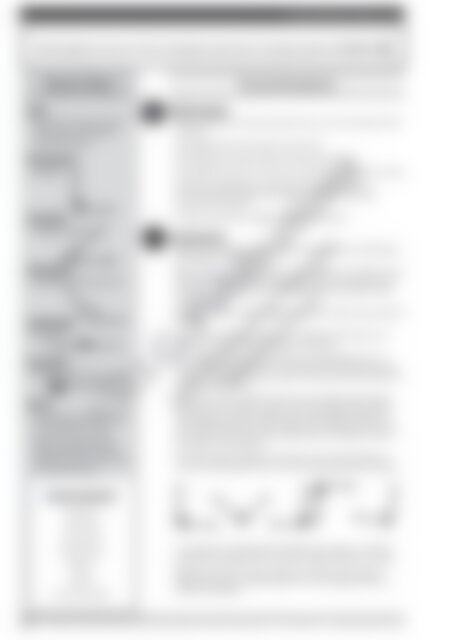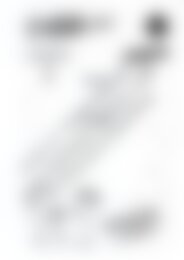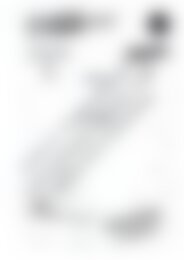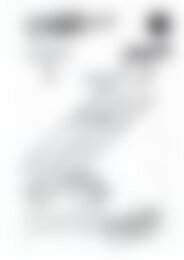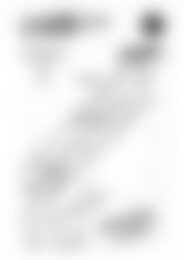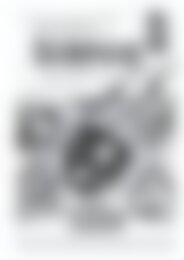RIC-20153 ACM Measurement and Geometry (Yr 3) Geometric reasoning
You also want an ePaper? Increase the reach of your titles
YUMPU automatically turns print PDFs into web optimized ePapers that Google loves.
Sub-str<strong>and</strong>: <strong>Geometric</strong> <strong>reasoning</strong>—GR – 1<br />
Identify angles as measures of turn <strong>and</strong> compare angle sizes in everyday situations (<strong>ACM</strong>MG064)<br />
RELATED TERMS<br />
TEACHER INFORMATION<br />
Angle<br />
• Two lines with a common end point<br />
called a vertex, or the extent of<br />
rotation about a point.<br />
Right angle 90°<br />
• Exactly 90°.<br />
Acute angle<br />
• An angle less than 90°.<br />
Obtuse angle<br />
• Greater than 90° but less than 180°.<br />
Straight angle<br />
• Exactly 180°.<br />
One rotation<br />
• A full turn to end up at the start (360°).<br />
Degree<br />
• A unit of measure of an angle, based<br />
on there being 360° in a circle.<br />
• Students need to be aware that<br />
degrees are also used to measure<br />
temperature, but this is not the same<br />
as the measure for angle.<br />
What this means<br />
• Right angles (those of approximately 90°) are ones that students should<br />
recognise.<br />
• Knowledge that an acute angle is less than 90°.<br />
• Knowledge that an obtuse angle is between 90° <strong>and</strong> 180°.<br />
• Knowledge that a full turn is the same as 360° <strong>and</strong> that half a turn is 180°.<br />
• Students are developing an awareness <strong>and</strong> underst<strong>and</strong>ing of<br />
the movement that relates to how angles are formed <strong>and</strong> to the<br />
measurement of angles.<br />
• The use of a protractor is not encouraged at this stage.<br />
Teaching points<br />
• Angles are classified by their size in their relationship to the right angle<br />
(90°). (Refer to related terms.)<br />
• Right angles are used extensively in most buildings. For example, where<br />
walls meet the floor <strong>and</strong> the ceiling, the corners of rooms <strong>and</strong> most of<br />
the angles in the construction of cupboards. Books <strong>and</strong> paper mostly<br />
have 90° angles.<br />
• Many doors open to 180°, though if near a corner, they may only open to<br />
about 90°.<br />
• Make links to the unit on time (UUM – 2) looking at the h<strong>and</strong>s on an<br />
analogue clock as they turn in a clockwise direction.<br />
• Also make links to the unit on location <strong>and</strong> transformation (L&T – 1)<br />
where quarter <strong>and</strong> half turns are used, along with ideas about the four<br />
cardinal compass points (north, south, east <strong>and</strong> west) <strong>and</strong> left/right <strong>and</strong><br />
clockwise/anticlockwise.<br />
• Students can get an intuitive idea of the size of angles when making<br />
comparisons. For example, that the size of the angles on the hexagon<br />
piece of pattern blocks are greater than a right angle (90°) <strong>and</strong> also<br />
much bigger than the size of the angles on the triangular block, which<br />
are less than a right angle. At this stage, they do not need to measure<br />
the angles on the two pieces.<br />
©R.I.C. Publications<br />
Low Resolution Images<br />
Display Copy<br />
• Show right angles in different orientations. This should help avoid a<br />
common misconception that we can have right angles <strong>and</strong> ‘left angles’.<br />
Student vocabulary<br />
right angle<br />
acute angle<br />
obtuse angle<br />
straight angle<br />
degrees<br />
rotation<br />
arms (of an angle)<br />
• It is important to make angles with different arm lengths so students<br />
realise that the length of the arms does not affect the size of an angle.<br />
• National tests often include a question on angles, where students<br />
identify the largest or smallest angles from a set of angles that have<br />
different arm lengths.<br />
72 Australian Curriculum Mathematics resource book: <strong>Measurement</strong> <strong>and</strong> <strong>Geometry</strong> (Year 3) R.I.C. Publications ® www.ricpublications.com.au


